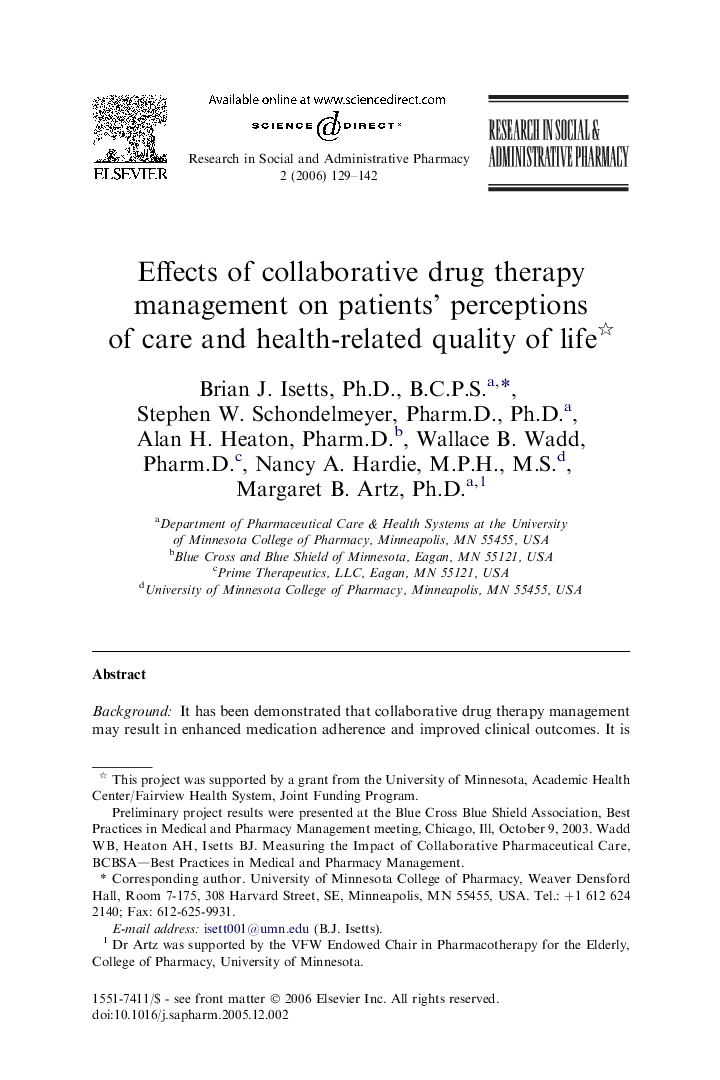| Article ID | Journal | Published Year | Pages | File Type |
|---|---|---|---|---|
| 2509049 | Research in Social and Administrative Pharmacy | 2006 | 14 Pages |
BackgroundIt has been demonstrated that collaborative drug therapy management may result in enhanced medication adherence and improved clinical outcomes. It is not yet known whether CDTM is associated with patients' perceptions of care or self-reports of health-related quality of life.ObjectivesExamine the impact of collaborative drug therapy management (CDTM) on patients' perceptions of care and health-related quality of life in 15 ambulatory clinics (6 intervention, 9 comparison) in the Fairview system of Minneapolis–St Paul, Minn.MethodsThe intervention was medication therapy management provided by pharmacists in collaboration with physicians (CDTM) for a 12-month period. Subjects were selected by age, gender, and presence of one of 12 medical conditions in the intervention (n = 285) and comparison (n = 285) group of patients. Comparison patients received usual care while intervention patients received at least 2 CDTM encounters. The CAHPS® (formerly called the Consumer Assessment of Health Plans) 2.0 survey was administered to both the intervention and comparison groups poststudy to analyze patients' perceptions of care.The Short Form-12 (SF-12v2) was administered to intervention group patients pre-CDTM and 6 months post-CDTM to measure health-related quality of life in the intervention group.ResultsDifferences in CAHPS® scores were not statistically significant (P > .05), although there was a trend toward higher ratings of patients' personal doctor/nurse and doctors' communication in the CDTM intervention group relative to the comparison group. Physical role, social functioning, and physical component summary scales of the SF-12v2 improved significantly (P = .001, P = .014, and P = .024, respectively; P ≤ .025 level).ConclusionsA trend toward improvements in patient perceptions of effectiveness of care using CAHPS® suggests a need for further study. Health-related quality of life improvements in this study meet or exceed previous results incorporating pharmacists into primary care. Intensity and integration of CDTM services may be an explanation; however, prepost study design limits inferences.
